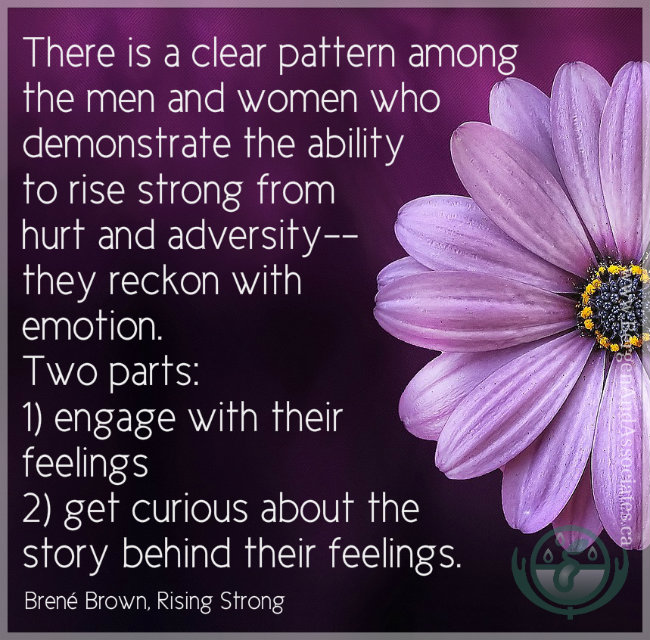Therapists love Inside Out, the movie that gives a window into folks’ emotions. It may be a cartoon, but there’s some well respected neuroscience in it, and the movie gives voice to the way we often talk to clients about different parts of themselves. So…we will be hearing from a couple of therapists and their take on it. First, Heather Pringle...
I believe that we want first to be heard and understood, more than we long to be rescued.
That’s why I love one of the main ideas from the movie Inside Out, of having separate characters personify emotions; it gives us a new way of understanding ourselves that’s not only fun but can also open the door to compassion.
In the movie Inside Out, 11-year-old Riley’s emotions – Joy, Sadness, Anger, and Disgust – are portrayed as cartoon characters. The movie offers us a parallel look into the various parts of Riley’s mind, alongside the outward experience of a big family move from Minnesota to San Francisco. Riley’s emotions congregate in the control room of the mind, interact with each other, and have very different priorities and ideas for Riley’s reactions to events.
Spoiler alert!…
Throughout Riley’s life so far, Joy has been in charge and is set against Sadness touching anything in Riley’s life. When Riley is about to go to her new school in San Francisco, Joy works tirelessly to keep Sadness away from Riley’s thoughts and memories.
Sadness is rejected – “NO SADNESS ALLOWED” but she keeps showing up and trying to have some input.
When Riley deeply misses her home in Minnesota, Joy works to keep Sadness away from those good memories of home. Why let Sadness touch a favorite fun memory? Why let Sadness near the control board of the mind, when Joy could run the show and things would be, well, joyful?
Joy sees impending disaster as Sadness seeks to touch Riley’s life more frequently.
Similarly, I wonder if today’s trend towards positive thinking sees sadness as something to avoid at all costs. I imagine these signs up all around us that say “NO SADNESS ALLOWED”, “BE HAPPY OR YOU’RE DOING SOMETHING WRONG!”.
And that makes me wonder what’s happening to Sadness in each of our lives; does Sadness have something important to say or a different role to play that we maybe haven’t realized?
In the movie Inside Out, eventually Joy and Sadness work things out. I don’t want to spoil all the fun details from the movie. For now, it’s enough to say that Joy comes to look at and approach Sadness in a new way.
My favorite part of the movie is the idea that in accessing, allowing, and accepting her emotions, all of her emotions, Riley becomes aware of what she needs.

This awareness leads to a deeper connection with herself and other people.
When Riley feels her Sadness and it is honoured and allowed by the others parts, she makes good choices. The process seems more attuned to the way we’re wired than simply “looking on the bright side”.
Accepting Sadness as part of our loved ones’ lives also has healing effects.
- When Riley’s parents honour Sadness by allowing it and showing they relate to it, they show Riley that they understand and accept all of her experience of the world.
- When Joy lets Sadness touch memories of a precious place that is now gone, the memories don’t lose their beauty but rather are appreciated in a way that shows how precious the special moments, people, and places have been for her.
I can kind of imagine some potential “ya, buts…” and objections because maybe listening to Sadness or another emotion feels so difficult or it hasn’t gone well in the past. Maybe you already feel stuck with Sadness and desperately need Joy to feel alive.
Allowing and accepting our emotions doesn’t mean we have to be stuck in them, act on impulse, or do or say things that harm ourselves or others. Awareness and acceptance of emotions can open the door to listen to ourselves in new ways so that we can glean some new information or energy.
Sometimes this can be quite daunting, scary, or confusing, especially if we’ve spent a long time trying to keep an emotion away, or our reaction has
been destructive to ourselves or others. The chain between thought and emotion can feel so impossible and painful to untangle at times.
It’s good to have others journey with us when it’s feeling like too much to experience on our own. When it feels so heavy, a safe person such as a caring friend or therapist can go a long way in helping us discover different ways to relate to our emotions.
When we can grow in the way that we look at our emotions, we can become more compassionate towards ourselves and others.
We can see the beauty of our minds in new ways and gain some insight into what is precious to us.
It might sound strange, but Sadness and Joy working together produce something more beautiful than what would come with just Joy alone.
**Poster is from a quote from Brené Brown’s new book, Rising Strong. I’ve been reading an advance copy and it’s great! Pre-order it today!






Write a Comment